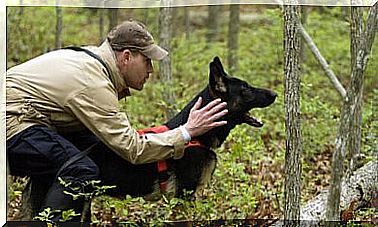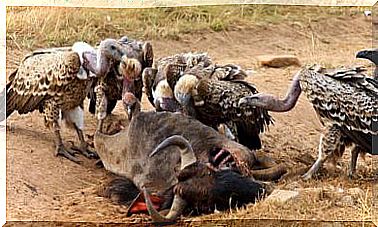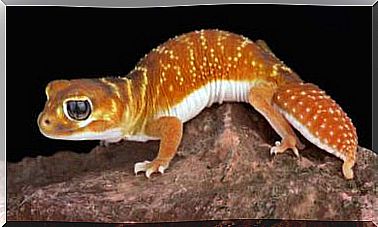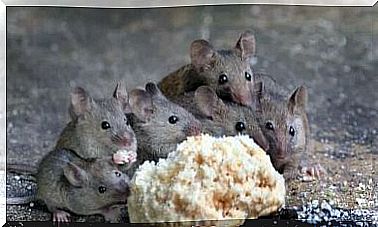Habits And Characteristics Of The Galapagos Albatross
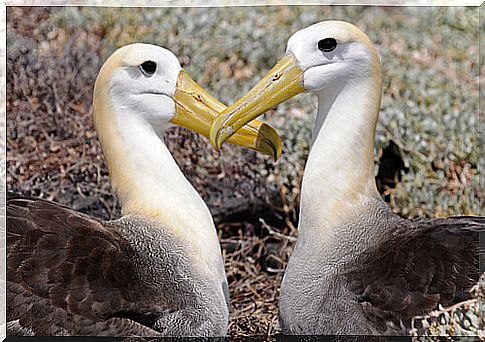
Also known as the vermiculate albatross, the Galapagos albatross is the only member of its family that lives in the tropics. In this article we tell you everything you need to know about the Galapagos albatross, a very unique bird.
Characteristics of the Galapagos albatross
Its scientific name is Phoebastria irrorata and belongs to the genus of Diomedeidae . As a main feature, the Galapagos albatross is the only one belonging to this family that lives in the tropics, specifically in the Galapagos Islands, from which it takes its name.
It is there that it settles during the breeding season. Then, the rest of the year, it moves to the coasts of Peru and Ecuador.
It is a very long-lived bird, which can live up to 80 years. Unfortunately, today it is in danger of extinction: it is protected in a national park, but it is vulnerable to illegal fishing, tourism and pollution caused by plastic waste.
As for its appearance, the Galapagos albatross measures nearly 90 centimeters and can weigh around two pounds. As an adult, the feathers are white on the neck, chest and legs, light gray on the belly and dark gray on the wings, while the beak is yellow. The chicks are almost completely gray, including the beak.
Habits and diet of the Galapagos albatross
The diet of this tropical bird is not very varied: it feeds on fish, crustaceans and squid. This means that everything he eats is found in the sea. Due to the decrease in food in recent times, groups of Galapagos albatross have been sighted eating the regurgitated remains of other birds.
To hunt or fish, the albatross follows linear paths along the coast of Peru and travels up to 1,000 kilometers, moving from its usual breeding sites. In addition, it can circle over a school of fish and attack at the right moment.
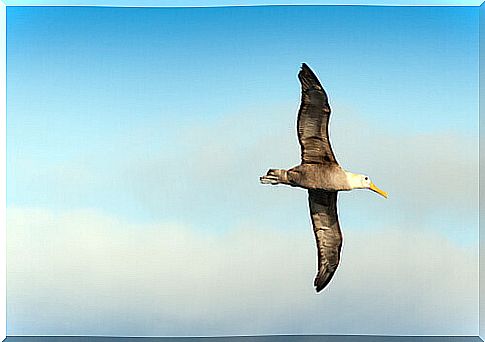
Another of the qualities of the Galapagos albatross is that with its wings that extend for three meters, it can glide according to the winds or reach a maximum speed of… 90 km / h!
Undoubtedly, the flight of the Galapagos albatross is its main feature and, therefore, it has been studied more than any other of its habits. Therefore, thanks to these studies, we are aware that it can fly for hours without stopping or rising vertically.
Since the wind speed near the sea surface is less than 15 meters, they prefer to fly higher. Sometimes they have some difficulty landing due to the speed they reach and the way they flap their wings.
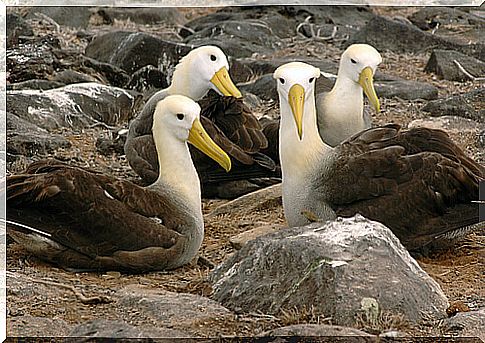
Breeding habits
As for the courtship aimed at reproduction, the Galapagos albatross performs a wonderful dance: the male surrounds the female, arches his beak and emits specific noises. It is also worth noting that they are monogamous until the death of one of the couple’s two members.
As for the eggs, they build nests in volcanic areas, where there are frequent eruptions of lava. The albatross looks for places with little vegetation, but with a dense undergrowth between the rocks. The female lays her eggs between April and June and hatches them for two months.
When the chicks are born, they stay with the parents and depend entirely on them. The parents go out hunting and the children wait in the nest. They can store up to two kilos of food to feed the little ones. Four months later, the chicks leave the nest and move away from the colony in January, along with the other adults.
All the animals are wonderful and attract our attention, but the Galapagos albatross delights us with its majestic flights and large size.



